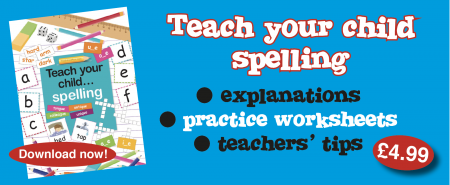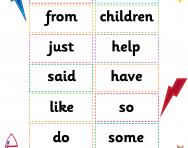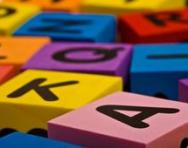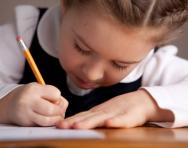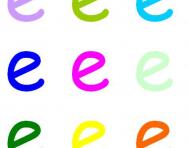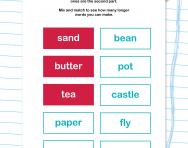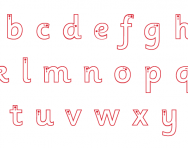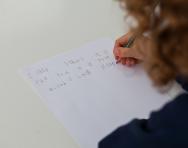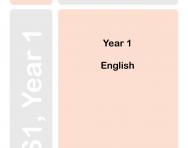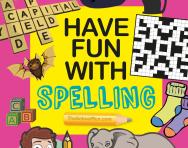Year 1 spellings
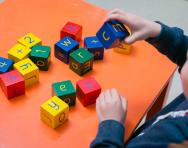
Spelling in Year 1
In Year 1, children will be doing lots of phonics work to help them with their spelling. This phonics work will consist of looking at how different sounds are spelled in different words.
Children will go over all the phonemes (sounds) they learned in Reception. They will learn both digraphs (sounds made by two letters, such as 'ee' or 'ir') and trigraphs (sounds made by three letters, such as 'igh' and 'tch’).
They will look at how the same sounds can be made by different groups of letters, for example:
- oy and oi (as in 'toy' and 'coin')
- ai and ay (as in 'rain' and 'say')
- ir, er and ur (as in 'dirt', 'fern' and 'turn')
- ow and ou (as in 'cow' and 'round')
- ow and oe (as in 'flow' and 'toe')
- ue and ew (as in 'glue' and 'flew')
- ie and igh (as in 'pie' and 'sigh')
- or, ore and aw (as in 'for', 'more' and 'raw')
- air and are (as in 'fair' and 'dare')
They will also look at how the same groups of letters can make different sounds, for example:
- ea in 'bead' and 'bread'
- oo in 'food' and 'wood'
- ear in 'bear' and 'fear'
Learning about split digraphs in Year 1 spelling
Year 1 children will also learn about split digraphs. As mentioned earlier, a digraph is two letters that make up one sound. Sometimes, when the digraph is made up of two vowels, a consonant appears between the two vowels, splitting up the digraph. For example, the word 'bite' is made up of the sounds 'b', 'ie' and 't', however, the 't' in this word splits up the vowel digraph 'ie', so that it is spelt 'bite'.
Here are some other examples of split digraphs:
- o_e as in 'rope'
- a_e as in 'tape'
- e_e as in 'theme'
- u_e as in 'tune'
Year 1 spelling patterns
As well as their phonics learning, Year 1 children will learn spellings of words that have particular patterns, for example:
- Words ending ff, ck, zz, ll, ss such as 'fluff', 'luck', 'buzz', 'fill' and 'kiss'
- Words ending nk such as 'bunk' and 'sink'
- Words with two syllables, such as 'ticket' and 'kitchen'
- Words ending ve such as 'have' and 'live'
- Adding -es to the end of plurals and verbs, for example: 'hutch' becomes 'hutches' and 'stitch' becomes 'stitches'
- Adding -ing, -ed and -er to words, such as: 'jump' which changes to 'jumping', 'jumped' and 'jumper'
- Adding 'er' and 'est' to adjectives to make the comparative and superlative form, such as 'kind' which changes to 'kinder' and 'kindest'
- Words ending y, such as 'happy' and 'funny'
- Words containing ph or wh, such as 'telephone' and 'which'
- Adding the prefix un- to change the meaning of a word, for example: 'fit' to 'unfit'
- Compound words, which are words made up of two short words, such as 'football' and 'playground'
Year 1 exception words
Children will also be taught what are now referred to as 'common exception words' (sometimes called tricky words). These are words commonly found in the English language, but which do not follow the phonic rules that have been taught so far. Examples of these in Year 1 are: 'were', 'once', 'school', 'house'.
How spelling is taught in Year 1
Teachers will usually give children a list of spellings to learn each week at home from Y1 onwards, but lots of work is also done in the classroom to provide an early, solid groundwork in spelling.
Teachers may encourage children to learn certain words by using them for handwriting practice. They may give the children cards to make learning spelling more interesting (for example, children may be given two parts of a compound word on two separate cards and asked to match the pairs). Fill-the-gap worksheets can also help children with their spellings; for example, a child may be given worksheets with pictures of objects and a partially written word that needs completing below.
The importance of parental help at home at this stage cannot be over-stressed. Year 1 is a crucial year for spelling, when all the vital phonics ground work is laid down ready for future years. Ensuring that your child knows their spellings for their weekly test should be a top homework priority!
Year 1 spelling worksheets
Look through our selection of Y1 spelling worksheets to find practical activities for your child to practise their spellings learning with.
You can also download a pack of Year 1 spelling tests, designed to help your child practise common spelling patterns and tricky words.
How spelling is taught in primary school, year by year
Find out what words and spelling patterns children are taught in each year of primary school with our parents' guides:

Give your child a headstart
- FREE articles & expert information
- FREE resources & activities
- FREE homework help
